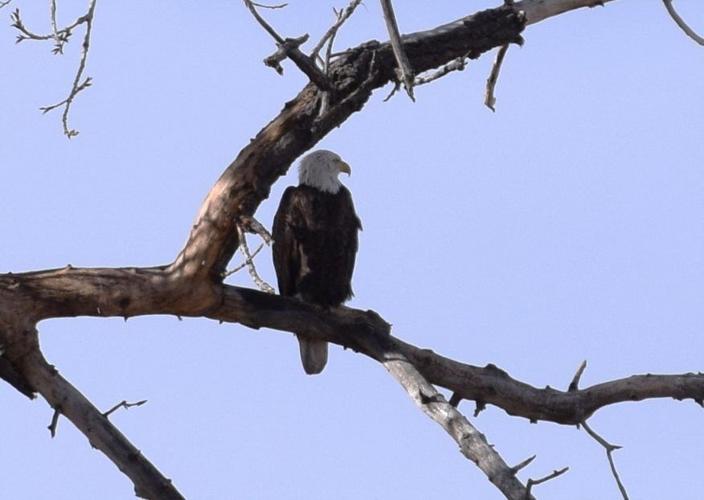Bald eagle becomes official national bird as best viewing season approaches in Colorado
A walk through one of the metro Denver area’s parks this winter could result in the sighting of a bald eagle — the official U.S. national bird as of late December.
Bald eagles are known for being a symbol of the nation — their image donning official government documents, money, standing as the insignia for all of the country’s military branches and serving as an integral part of the spiritual lives and sacred belief systems of most Indigenous peoples and Tribal communities, the bill states.
Despite the long history of the bald eagle’s significance to the nation, it was not officially declared the national bird until Dec. 24, when President Joe Biden signed a bill into law that declared it as such.
The bald eagle, which is endemic to North America and named for its white head, has appeared on the Great Seal of the United States, which is used in official documents, since 1782, when the design was finalized. The eagle is also the leading insignia for all branches of the U.S. military and the leading image on thousands of federal government branches, departments and agencies, according to the signed bill.
In Colorado, bald eagles can be seen in parks and near water across the state, with a large population in the front range, according to Kara Van Hoose with Colorado Parks and Wildlife.
The best time to spot a bald eagle in Colorado is around February, March and April, Van Hoose said, which is when the eagles nest.
This past year was a “great year” for bald eagles in Colorado, with an estimated 480 occupied nests in the state, Van Hoose said, emphasizing that the number is an estimate and bird numbers are difficult to count since birds do not abide by state lines.
Tips for spotting bald eagles in the front range
Van Hoose gave several tips for spotting bald eagles in the metro Denver area.
- Look high: bald eagles tend to nest in tall trees, particularly Cottonwood trees, high above the ground. Check for dead tree limbs, or those scarce of foliage, since eagles will often choose those areas for nests to have better visibility of the hunting land below.
- Go where there’s water: eagles like to hang out near reservoirs, lakes and other water sources, since their main source of food is fish.
- Look for white heads: bald eagles are most easily spotted by their unique white heads, which gave them their names.
- Bring binoculars: due to their common location high up in trees or soaring through the sky, they are best spotted with binoculars or spotting scopes.
- Respect eagles and all wildlife: keep your distance from bald eagles and other wildlife. Pick up trash to keep birds from eating or getting caught in it. Leave bald eagle feathers and other remnants alone. It is illegal to collect bald eagle parts, including feathers, nests and eggs.
Where to spot bald eagles near Denver
Van Hoose mentioned several state parks in the metro Denver area that make good eagle-spotting areas, especially come February and March.
Some areas where bald eagles have been spotted in the metro area are below. The list is not comprehensive and looking to water sources, like reservoirs, and tall trees will provide the best chance at spotting one.
- Barr Lake State Park, Brighton – upwards of 100 bald eagles winter at Barr Lake, according to the Bird Conservancy of the Rockies.
- St. Vrain State Park, Firestone
- Cherry Creek State Park, Aurora
- Chatfield State Park, Littleton
- Star K Ranch, Aurora
While bald eagle populations have grown significantly, they have not always been as prevalent as they are now. The U.S. Fish and Wildlife Service (FWS) calls them an “Endangered Species Act success story.”
In the mid-1900s, bald eagles were in danger of extinction due to habitat destruction, illegal shooting and pesticide use, especially that of DDT.
In 1940, Congress passed the Bald Eagle Protection Act, which prohibited killing, selling or possessing the species. By 1963, there were only 417 nesting bald eagle pairs known to exist. In 1972, the dangers of DDT became known and the pesticide was banned, according to the FWS.
Bald eagles were listed as endangered in 1978 following the enactment of the Endangered Species Act, which allowed for recovery efforts like captive breeding and nest site protection during breeding season.
They were taken off the endangered species list in 2007, when the FWS estimated over 9,500 nesting pairs in the United States, but are still protected under the Migratory Bird Treaty Act and the Bald and Golden Eagle Protection Act.
Van Hoose called bald eagle sightings “really special.”
“You feel a sense of connection with nature when you see them,” she said. “It’s a really special thing to see.”






